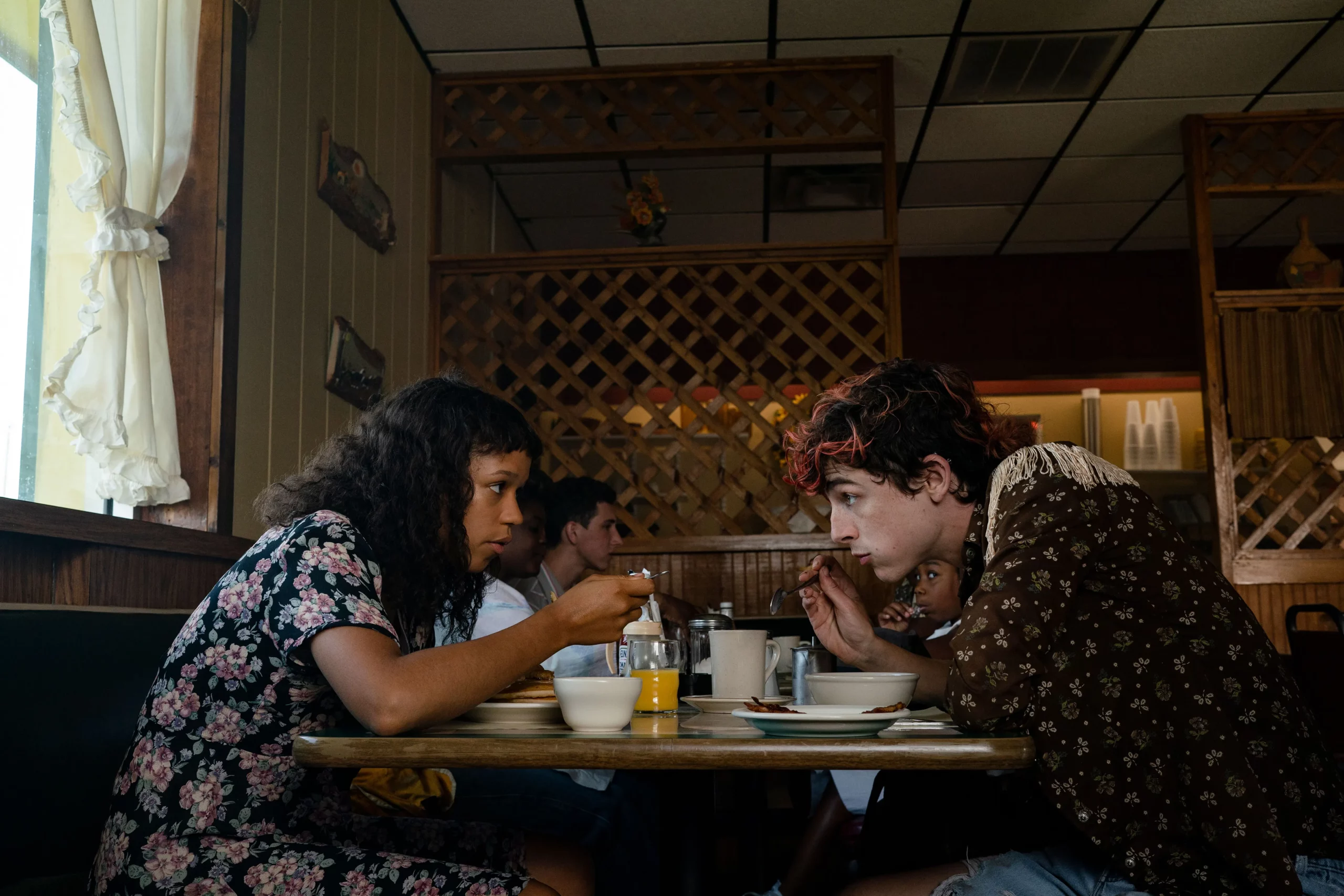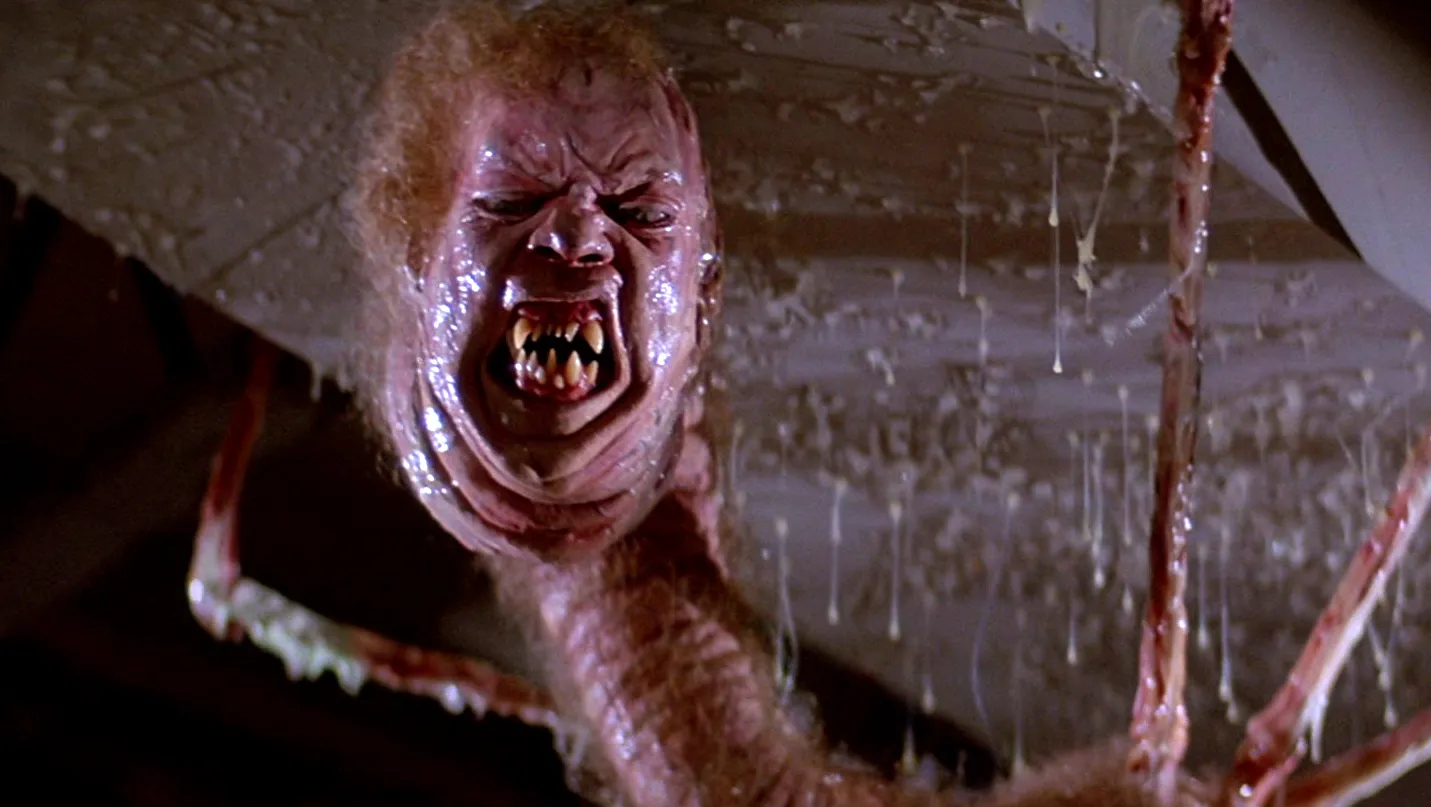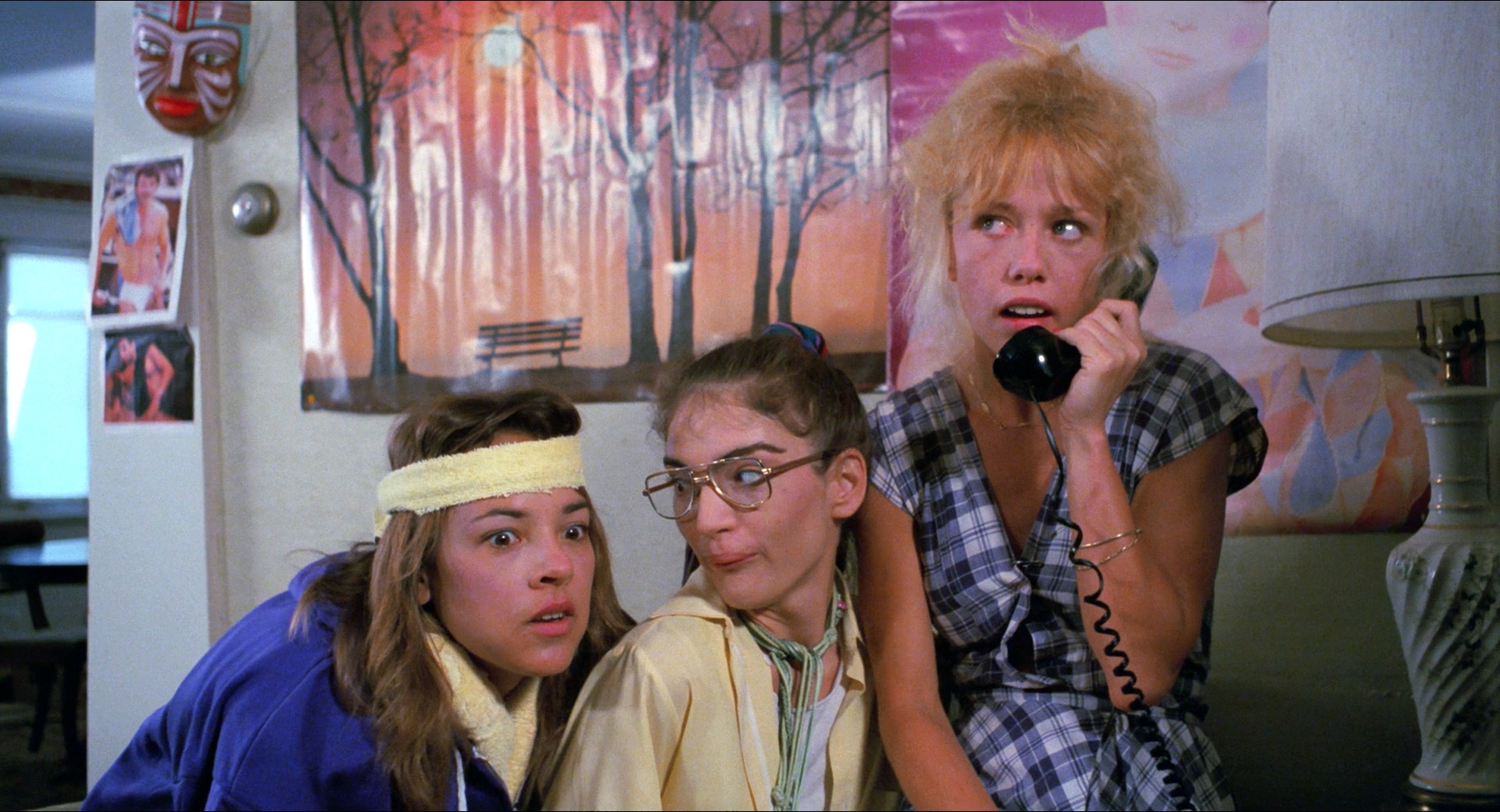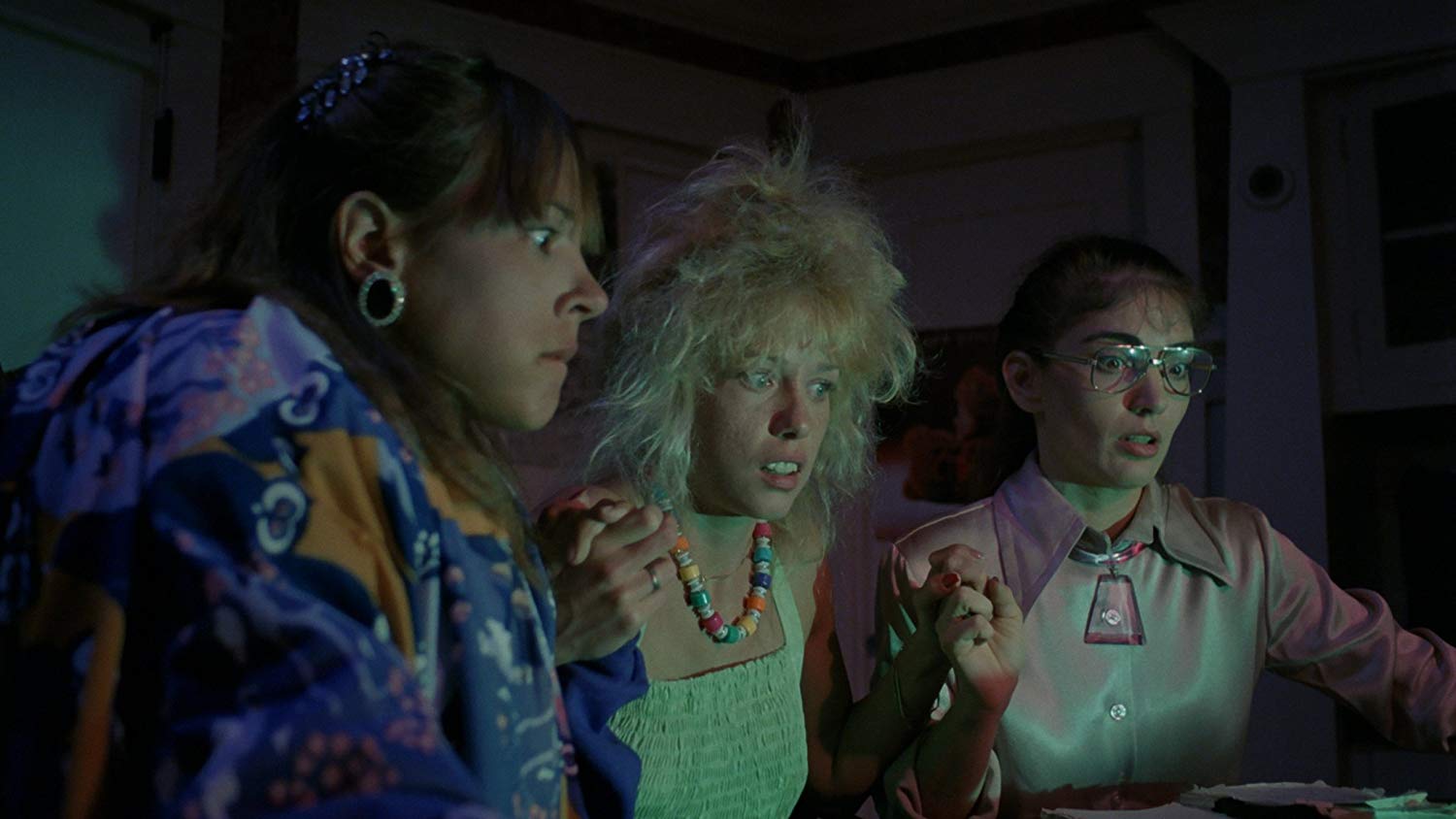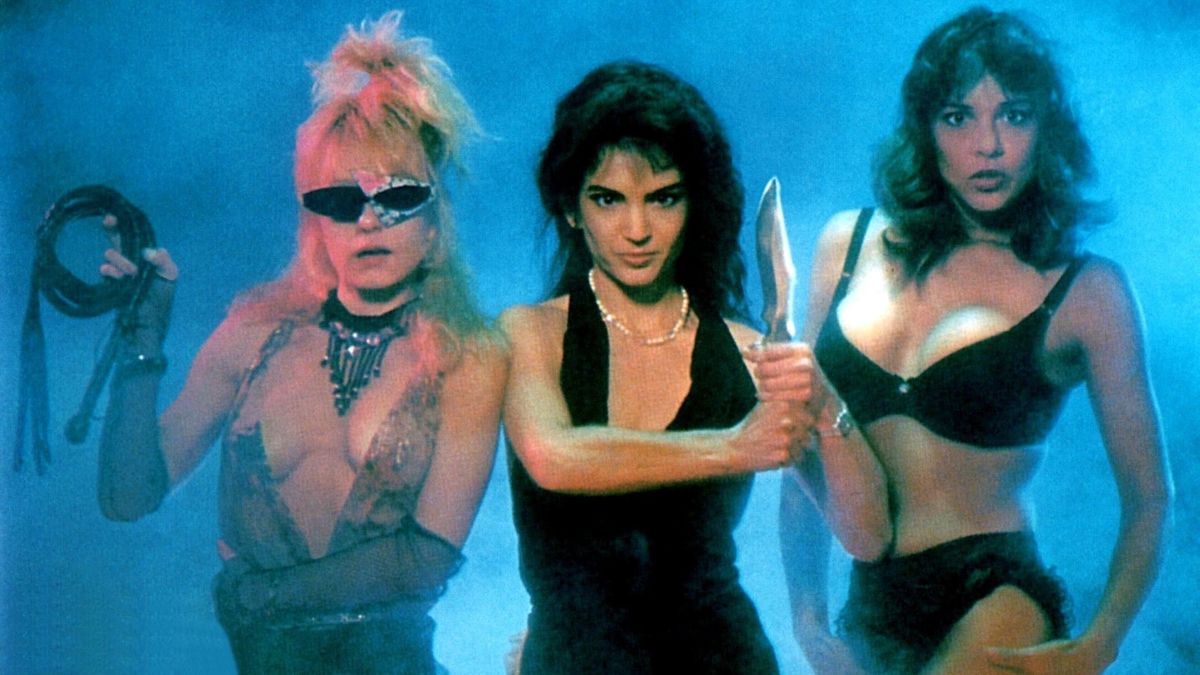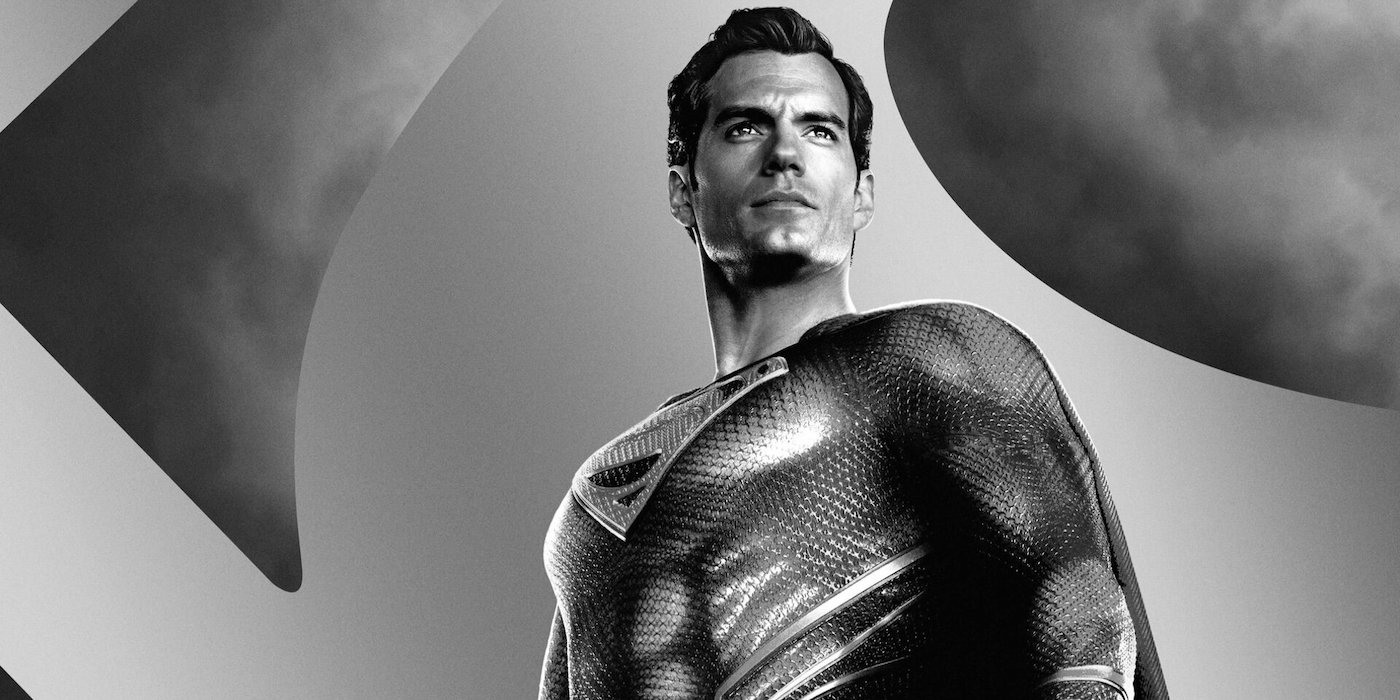Elevate This – Defending ’80s Horror
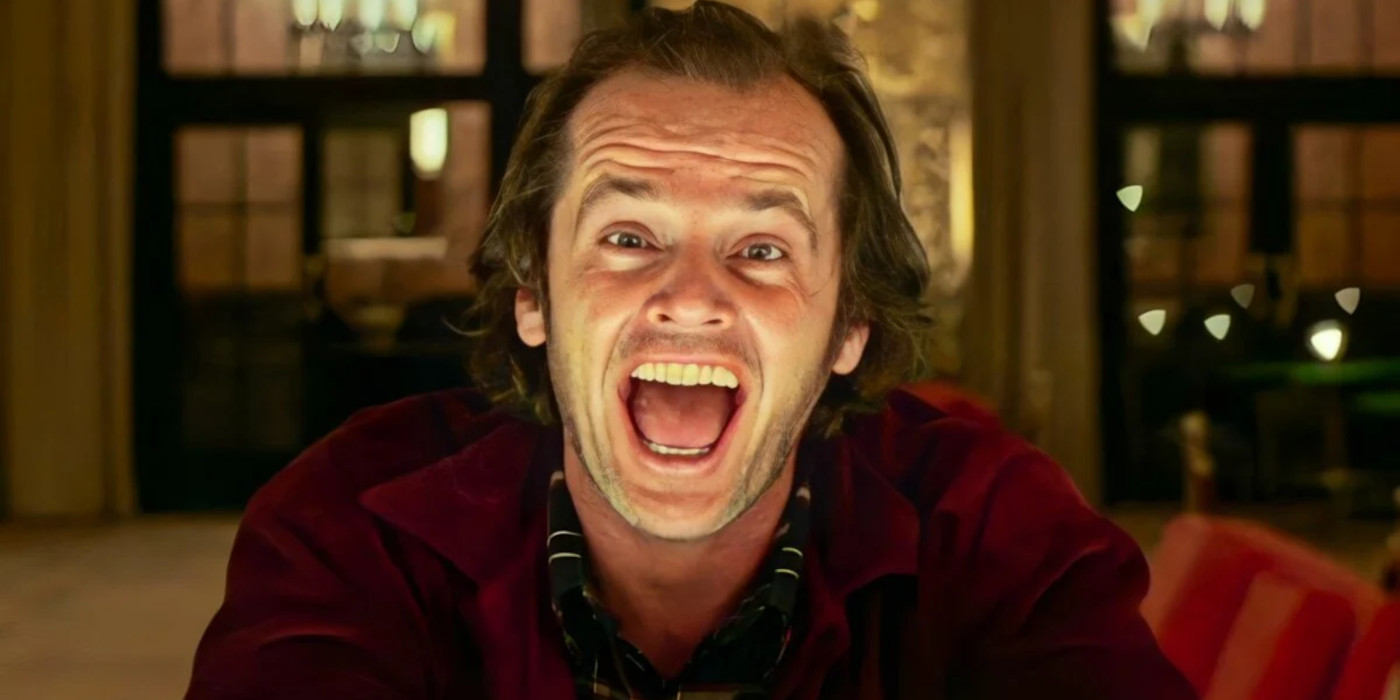
The highbrow, art-house aesthetic of “modern horror” is not where the genre’s worthiness begins. Even “bad” ’80s horror has artistic merit.
The 2010s are often billed as the decade where horror became respectable. During that time, movies like It Follows, which deconstructed slashers as a meditation on mortality, finds success among critical circles. The Babadook is a brilliant analysis of mental illness and motherhood. Get Out is an examination of systemic racism.
All the above movies are great and do exactly what critics say they do. But as the 2020s continue the trend of glowing reviews, there’s also this growing idea that horror movies preceding this era are somehow less worthy.
A recent article from W Magazine titled “The Year Horror Went Highbrow” is making the rounds–and not in a good way. The article persists in the stereotype that the genre has only recently become elevated. Actress Barbara Crampton called out the article’s author for not being “well-versed” in horror.
You know me & I rarely get mad & go on…about things but the article in @wmag by @maxinewally had me seething w/ her hot take about 80’s horror being filled w/ predicable plots, ham fisted dialogue & C list actors. Here Maxine admits she really is NOT well versed. pic.twitter.com/1ZQMa0x2Qw
— Barbara Crampton (@barbaracrampton) March 19, 2023
And since people are already talking about the concept of “elevating the genre” we figure why not weigh on. First of all…
What Does Elevated Even Mean?
At this point, the word “elevated” is about as meaningful as the word “woke”. It’s just a term people use as shorthand for something nebulous. Let’s try to clear this up. When people talk about the elevation of “genre” filmmaking, what do they actually mean?
Part of the conversation circles around “what the story is really about”. But the idea of subtext with your scares is not exactly new. The original Black Christmas is about women’s bodily autonomy. Alien revels in its takedown of corporate culture just as much as it embraces body horror.
And this tendency does not vanish somehow in the 1980s. Poltergeist is about the consequences of whitewashing the past. Jason Voorhees in Friday the 13th represents a takedown of Reagan’s “War on Drugs” and speaks to the anxiety surrounding the AIDS crisis. John Carpenter’s The Thing is all about human paranoia.
So “elevation” is not about subtext because Bones and All has no more majority share hold on subtext than Day of the Dead does. This leaves us with the other angle: cinematography. And that’s just a way of saying that horror movies look pretty nowadays.
And modern movies like Pearl, Bones and All, and Nope all represent thoughtful visual narratives. But take a filmmaker like Ari Aster whose movies Hereditary and Midsommar are awash in praise over their aesthetic and then remember that he’s being influenced by past filmmakers. Alfred Hitchcock, Stanley Kubrick, Roman Polanski, and Sam Raimi all craft essential and brilliant tapestries from which to hang their scary stories.
Let’s just call it what it is.
All Horror Movies Are Elevated
Once you separate yourself from the subtext and the aesthetics there’s really one fundamental reality: the entire business of scaring people is, by its very nature, elevated. The goal is to quicken the pulse and build tension. The point is to make people hold their breath. You get some laughs, you get some tears, and, in the end, the audience is on the edge of their seat.
That is the elevation of mood. That is the heightening of the senses. So, yes: anything within the genre of horror is, effectively, elevated.
So let’s set elevation aside. And let’s also stop drawing comparisons between the most beloved horror films from the past and present. Because what we’re really here to do is point out that ’80s horror movies, whether they stack up with modern sensibilities or not, are worthwhile.
Let’s look at an ’80s movie that represents all the things people perceive as “bad” from the genre during that time. The movie I want to focus on is one you probably have never even heard of before–it’s a 1988 film called Nightmare Sisters.
Nightmare Sisters – A Critical Overview
In the late 1980s, director David DeCoteau made a textbook straight-to-video shlock fest for the ages. Nightmare Sisters starts on an awful Indian stereotype featuring brown face and a straight-up turban–and things only go downhill from there. It’s a movie about three nerdy (but horny, naturally) sorority sisters who make a deal with a succubus to become beautiful.
Nightmare Sisters features the longest, most gratuitous bath scenes from the 1980s. The three female leads spend approximately half the movie topless. Two fraternity boys perish due to oral sex-related injuries. There’s no real plot beyond “frat guys try to get laid, get murdered instead”.
None of this touches the budget constraints. Nightmare Sisters is literally filmed over an extended weekend in someone’s house. There are no new film materials. The entire endeavor is shot on 19,000 feet of short ends. The cinematographer is usually a gaffer. Some of the creature effects come from other movies. And David Decoteau’s filmmaking is so basic he has the nickname Dave “Security Cam” DeCoteau.
In short: Nightmare Sisters is the lowest of the lowbrows. It’s less a movie and more a dare. Can you really make a movie on this little? Sure, but what you wind up with is everything modern critics see as proof that the 1980s was a mindless, cocaine-fueled cash grab.
Nightmare Sisters – Elevated Horror Edition
Forget everything I just wrote: Nightmare Sisters is a masterstroke. Horror lover and long-time filmmaker David DeCoteau reunited three of the most entertaining VHS actresses of the decade to make a send-up of ’80s sleaze.
Linnea Quigley, Michelle Bauer, and Brinke Stevens get to shed their usual, on-screen vixen personas in favor of playing nerds. Quigley has freckles and fake buck teeth. Bauer is in a fat suit. And Stevens wears a classic “Revenge of the Nerds” style outfit–and they get page after page of actual, dialogue.
The men seeking to objectify these women meet an untimely, grotesque demise. And there’s an intentionality to the nudity when it happens. After all, is Michelle Bauer still sexy when she’s dumping a pie on her body? What about when she bites the genitals off of an unsuspecting coed? The nudity exists in part to make people ask: why do I find this erotic again?
Nightmare Sisters gives the gaffer on Dolores Claiborne a shot at cinematography. It affords the chance for both Linnea Quigley and actor Michael Sonye to bring their punk rock to a new audience. Some stray film ends and an empty house are not wasted–they are an opportunity to create subversive art.
Two Things Can Be True
Both accounts of Nightmare Sisters are 100% accurate–they just focus on the film from different angles. I happen to love Nightmare Sisters for all its foibles and all its subversions precisely because I know the story behind its story. It’s a very silly movie. But Nightmare Sisters is also full of queer artists using camp to celebrate a genre they love while also poking fun at it.
Is Nightmare Sisters elevated horror through a modern lens? No, not particularly. But looking at it that way is folly. Expecting any decade of horror to fit with the modern trappings of whatever decade you happen to be living in is folly. In 30 years people who look at horror through such a lens will probably say the same thing about 2020s movies that people say about ’80s movies now.
There is plenty of aesthetically lush and subtextually brilliant narrative throughout ’80s horror. But using them as proof that the decade is just as valid as the 2010s or 2020s is an exercise in futility. That’s not the point.
What matters is that whether it’s The Thing or Nightmare Sisters, horror movies from the 1980s enticed an entire generation with bombastic box art and glorious excess. To exorcise these films from the foibles of the decade that made them takes away the cultural context that’s as much a part of the stew as the films themselves.
The bottom line is this: horror movies have always been mainstream, elevated, and worthwhile. And also Nightmare Sisters rules.
Thank you and goodnight.

